The variety of milkweed species is simply unlimited. This poisonous plant today is an inhabitant of many window sills. Providing the indoor plant with euphorbia proper care, you can for many years admire the flower on your window.
Material Content:
Euphorbia - the nuances of growing
Due to the fact that the plant is poisonous, certain nuances must be taken into account when growing it. So, when caring for milkweed, you must wear rubber gloves. It is also unacceptable that the plant is accessible to young children who seek to try everything on the tooth. If you have pets, you also need to protect them from the flower. Do not forget that milk doesn’t have a place in the kitchen, like all other poisonous cultures.
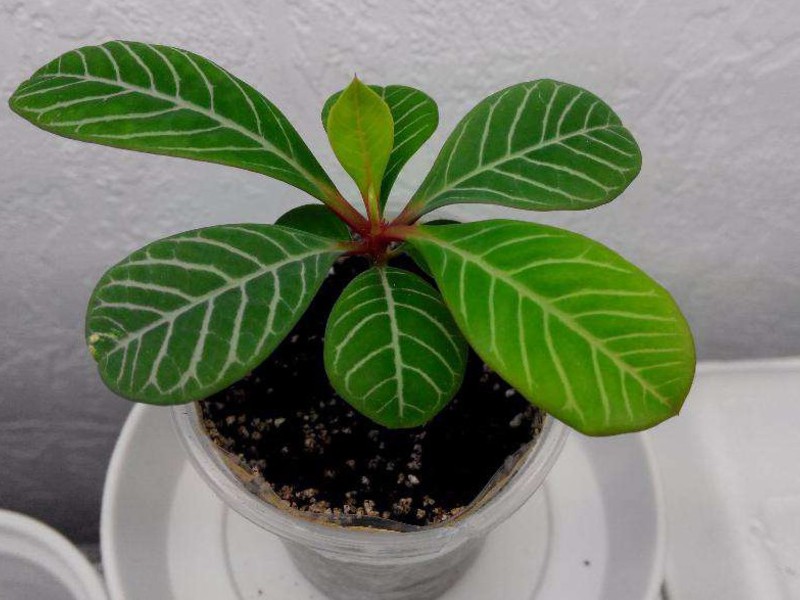
Caring for a plant is very simple, which is why it is one of the most common indoor flowers. If you follow the safety rules, you can not be afraid that the euphorbia will cause harm.
Home Care
With all its external decorativeness, this flower is so easy to care that even a beginner gardener who has absolutely no experience in growing indoor plants will cope with it. Euphorbia is not picky about light. With good lighting, the flower grows much better, but does not fade in the shade, continues to develop, albeit somewhat more slowly. Home care for the plant is worth considering in detail.
Transplant after purchase
Euphorbia is transplanted in the spring. If the plant is purchased in containers intended for transportation, then you need to move it to a quality pot as soon as possible, regardless of the time of year.This condition is mandatory, since in such a pot the euphorbia cannot stay for a long time and, with all its unpretentiousness, can die.
Soil requirement
The substrate is of great importance for the qualitative development of the plant. To choose for it should be loose soil, which is well permeable to water and does not violate root respiration. You need to purchase a special primer for succulents or cacti. If necessary, you can prepare the soil yourself.
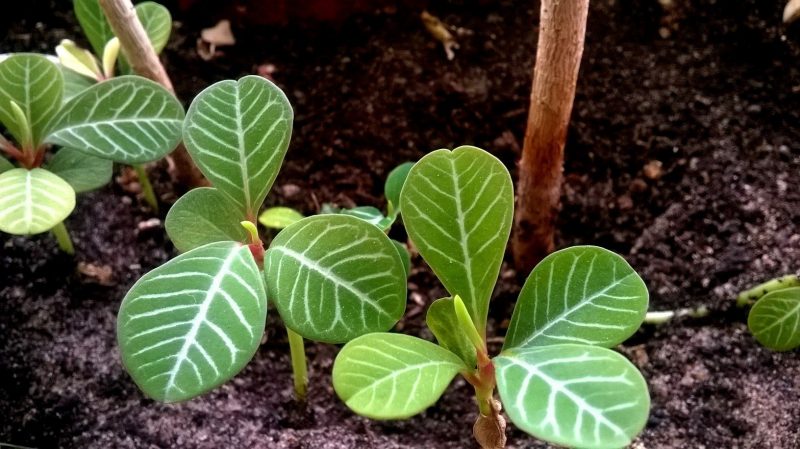
For this, the following components are used in a 2: 3: 3 ratio:
- sheet earth;
- humus;
- sand.
A drainage layer must be laid at the bottom of the pot, as siltation leads to the death of the plant. For the drainage layer, expanded clay is used, fragments of brick or large pebbles.
Fertilizing and fertilizers
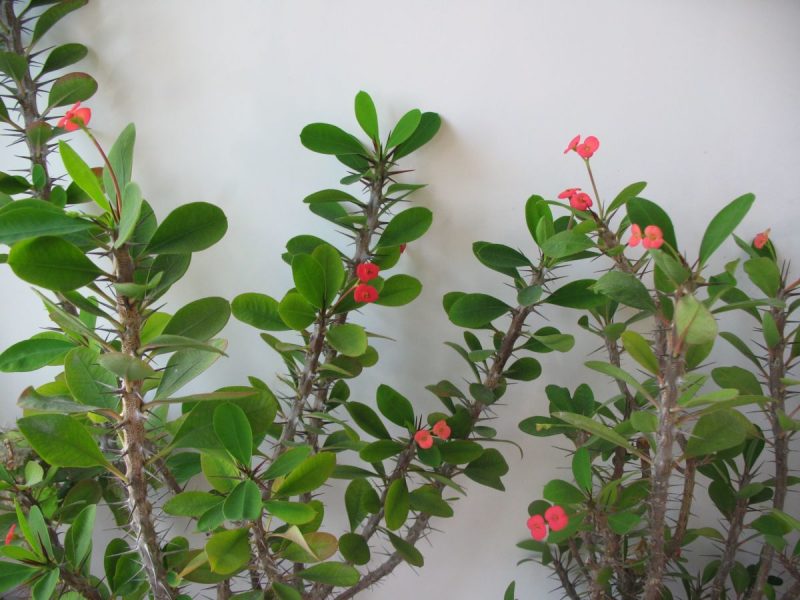
Euphorbia is required to be fed only during the period of active vegetation, which falls on the warm season. Fertilizers are applied once every 30 days after watering the milkweed. It is only necessary to feed the plant with potash fertilizers. Organics should not be added to the culture. In autumn and winter, the flower is at rest, and it is not only not necessary to feed, but also harmful. Like most succulents, euphorbia can grow on fairly poor soil.
Watering
It is necessary to water the plant according to certain rules, since waterlogging of the soil is extremely dangerous and can lead to death.
In the heat, the euphorbia should be sprayed once a day with a spray bottle of warm, settled water. Watering in the spring and summer months is carried out 1 time per week. After the plant goes into a dormant state, the soil is moistened only once a month.

If the temperature in the room where the euphorbia hibernates drops below +12 degrees, watering must be completely stopped, since the plant can simply rot in wet soil.
After the flower has not been watered for a long time, and the soil is very dry, it is necessary to resume moistening gradually. Within a few days, a little warm, settled water is poured into the pot, each time increasing the portion by 2 times. After the soil is well-nourished, you can begin to irrigate, as usual. If you immediately pour a lot of water, then the roots can choke, because after a long period of rest and lack of water, they are not able to immediately begin to normally absorb liquid and restore good breathing in the wet layer.
It is interesting:tradescant care
Optimum temperature and humidity
For a flower, the standard room temperature is optimal. In the warm period, it is very useful to take the plant to fresh air. It is necessary to return the flower to the room as soon as the air temperature in the street drops below +15 degrees.
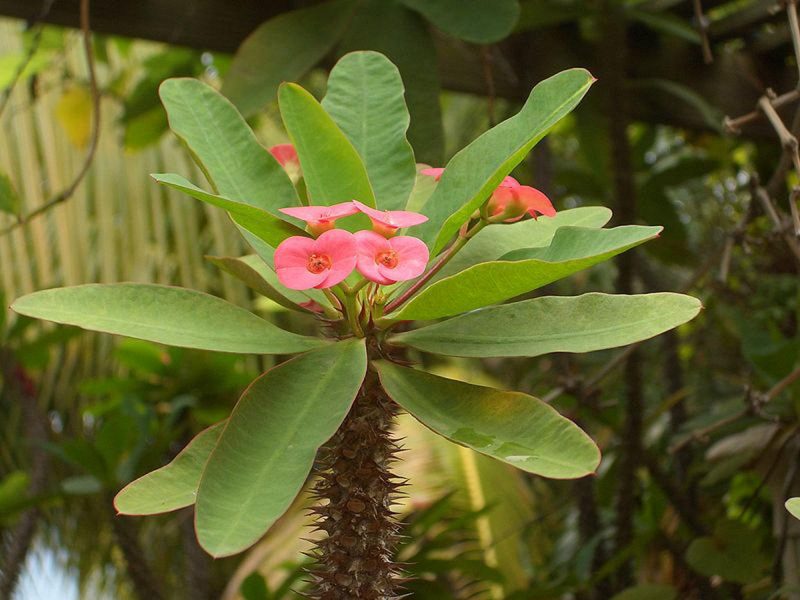
Some types of milkweed can tolerate a decrease in temperature to +5 degrees, but they are not very common. Among lovers of indoor plants, mostly heat-loving varieties are grown in apartments. The flower tolerates dry air well.
Pruning
Trimming milkweed only requires anti-aging and for plants that are already quite old. Spend it in mid-summer after the spurge has faded.
During such trimming, which is always performed with gloves, the following actions are carried out:
- cut dried stems;
- shortening of excessively elongated stems.
If the plant belongs to a flowering species, then all young shoots must be left untouched so that the euphorbia blooms next season. If the plant is not blooming, then young shoots can also be shortened.
The next year, after pruning, the plant blooms 2 times more abundantly and is actively gaining a lot of young shoots, from which the flower looks very decorative.
Propagation of indoor flower euphorbia
Reproduction of the plant is not difficult.
There are three ways to plant a flower:
- by seeds;
- cuttings (these include leaves);
- division.
The easiest way to grow plants from seeds, because this method is of interest in breeding crops.
Seeds are collected using a tissue bag. The pods are insulated so that the seeds, when opened, do not spill out onto the soil from which it will be impossible to collect them. They can be stored in a paper bag for a maximum of 12 months.
They are sown in moist soil for milk and, having covered the dishes with them in a bag, they are left to germinate, regularly moistening the soil.
When propagating by cuttings, leaves or shoots are used, which are cut at an angle. After they are dipped for several minutes in warm water in order to stop the secretion of milky juice, and, sprinkling the cut with powdered charcoal, they are planted in wet soil. Until the rooting, the plant is kept under a plastic bag.
The division of the bush is carried out only when the plant is very large. It is removed from the pot during dormancy and the rhizome is divided into several parts, which are planted in separate pots. The method is quite risky, and therefore not recommended for use.
Diseases and Pests
Plant diseases occur with improper care. If the euphorbia begins to rot, it means that the care is wrong. Rot appears even if the euphorbia is constantly exposed to cold drafts. Of the diseases, gray mold is most commonly found. Leaves fall if the plant lacks moisture.
Despite the fact that the flower is poisonous, it is not rarely attacked by parasites, which can cause serious harm.
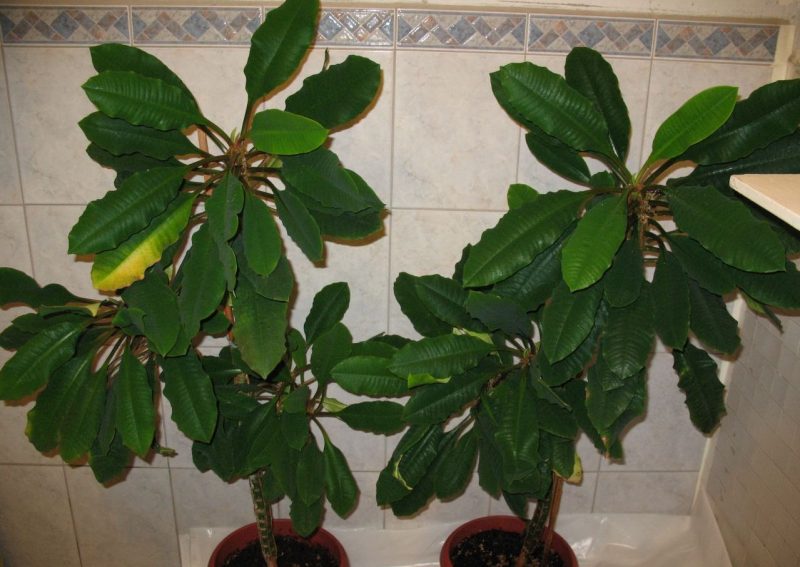
The main pests that are dangerous are:
- mealybug;
- aphid;
- spider mite;
- root worm;
- scale insects are the main reason why leaves turn yellow.
To combat parasites, special drugs are used, which are purchased in gardening stores.
What is the danger of a poisonous flower euphorbia?
The danger of the plant lies in its milky juice. Milk juice of milkweed takes the first place among all plant poisons, which should not be forgotten when growing plants in the house.
What is dangerous poisonous flower euphorbia, should know every grower.
If it gets on the skin, a severe burn occurs, which is accompanied by severe inflammation, and with allergies, ulcers also form. Juice, if it comes into contact with the skin, should be rinsed off immediately with cold water, and then ice should be applied to the affected area. It will not be superfluous to take an antiallergic agent.
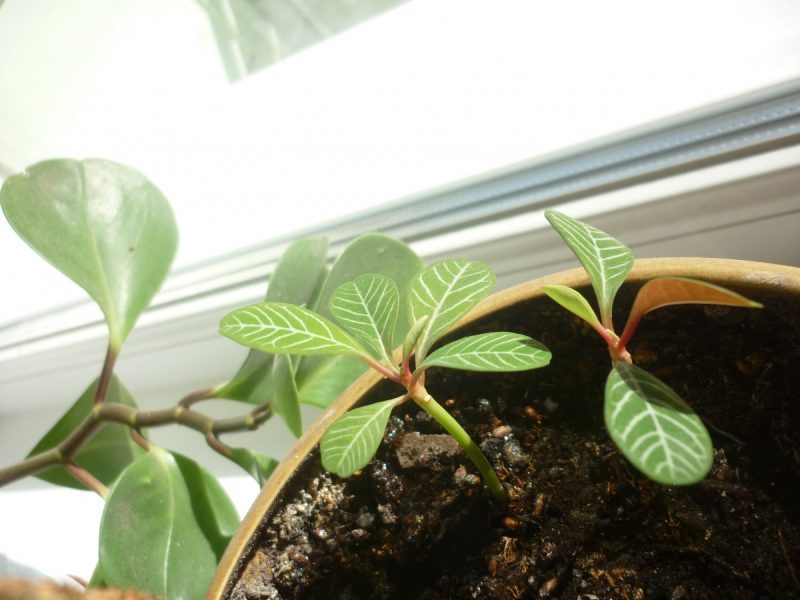
When juice enters the eyes, the cornea is damaged. Because of this, even with timely treatment, the risk of developing irreversible blindness is high.
If the juice enters the mouth and is swallowed, severe intoxication of the body will develop. With it, urgent treatment for medical care is required.
Can I keep at home?
You can keep euphorbia in the house, but only if you remember its features and observe safety rules. Violation threatens with serious consequences. If there is no way to ensure the inaccessibility of milkweed for children and pets, then it is better to refuse to buy the plant.
Before you start euphorbia in the house, you need to think about it so as not to risk it. Is it possible to keep euphorbia in the house, including the white-veined (the most poisonous), depends on specific conditions.












